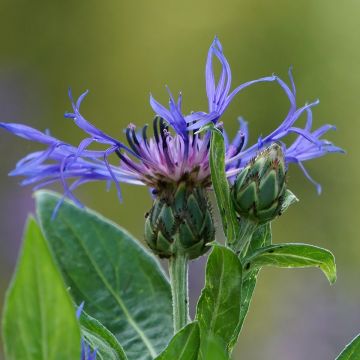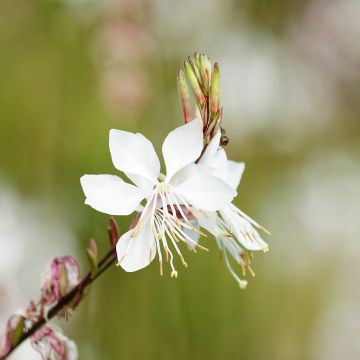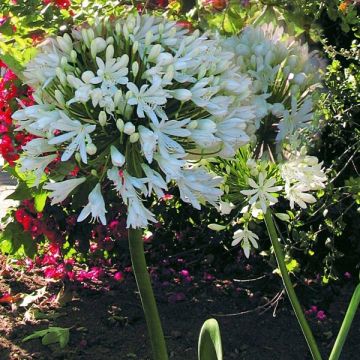

Patrinia gibbosa
Patrinia gibbosa
Patrinia gibbosa
Swollen Patrinia
This item cannot be shipped to the selected country
Delivery charge from €5.90
More information
Schedule delivery date,
and select date in basket
This plant carries a 12 months recovery warranty
More information
We guarantee the quality of our plants for a full growing cycle, and will replace at our expense any plant that fails to recover under normal climatic and planting conditions.
From €5.90 for pickup delivery and €6.90 for home delivery
Express home delivery from €8.90.
Does this plant fit my garden?
Set up your Plantfit profile →
Description
Patrinia gibbosa, related to the garden Valerian, is one of those little-known and rarely planted perennials that possess the charm and robustness of wild plants. Its summer flowering, composed of numerous light umbels adorned with tiny bright yellow flowers, remains decorative even when the seeds form. Hardy and easy to grow in moist soil, it adds a radiant touch and a lot of lightness to flower beds and bushes, in partial shade or non-scorching sun.
Patrinia gibbosa is native to Japan. It belongs to the Caprifoliaceae family, not the Valerianaceae. It is a herbaceous plant with a perennial stump. It grows from spring, forming a vigorous, bushy and compact clump that reaches an average height of 40cm (16in) with a diameter of 30cm (12in). The clump consists of leafy stems of acidic green colour. The stems bear large entire leaves, measuring up to 15cm (6in), with a broadly ovate lamina that is slightly swollen and bordered by large teeth. Flowering takes place in July-August. From the foliage emerge branched and leafy flower stalks, reaching a height of 60cm (24in). At the end of each branching, a cymose inflorescence unfolds, measuring up to 10cm (4in) in diameter. It consists of tiny yellow flowers, highly honey-bearing and nectar-bearing. The above-ground vegetation is deciduous and dries up in winter. This Patrinia gibbosa can self-seed in slightly moist light soils.
Patrinia gibbosa is planted in flower beds or borders, preferably in partial shade and in good garden soils that are not too dry in summer. It accompanies many other perennials and bushes that appreciate the same environments: bellflowers, integrifolia clematis, foxgloves, Griffon's spurge, Himalayan cranesbill, Eupatoriums, and buttercups, for example. Its fresh or dried flowers can also be used in floral arrangements.
Report an error about the product description
Flowering
Foliage
Plant habit
Botanical data
Patrinia
gibbosa
Valerianaceae
Swollen Patrinia
East Asia
Other Centranthus - Valerian
Planting and care
Patrinia gibbosa is a young plant perfectly resistant to cold, which prefers partial shade or sunny but not scorching exposures. It is planted in a field of plants with ordinary, well-tilled, soft (not too heavy) soil that remains slightly moist even in summer. Once well established, it requires very little maintenance except for watering in case of drought. It sometimes self-seeds spontaneously without becoming invasive. Beware of attacks from slugs and snails that can devour the young shoots, which can be fatal for the young plants.
Planting period
Intended location
Care
This item has not been reviewed yet - be the first to leave a review about it.
Summer flowering perennials
Haven't found what you were looking for?
Hardiness is the lowest winter temperature a plant can endure without suffering serious damage or even dying. However, hardiness is affected by location (a sheltered area, such as a patio), protection (winter cover) and soil type (hardiness is improved by well-drained soil).

Photo Sharing Terms & Conditions
In order to encourage gardeners to interact and share their experiences, Promesse de fleurs offers various media enabling content to be uploaded onto its Site - in particular via the ‘Photo sharing’ module.
The User agrees to refrain from:
- Posting any content that is illegal, prejudicial, insulting, racist, inciteful to hatred, revisionist, contrary to public decency, that infringes on privacy or on the privacy rights of third parties, in particular the publicity rights of persons and goods, intellectual property rights, or the right to privacy.
- Submitting content on behalf of a third party;
- Impersonate the identity of a third party and/or publish any personal information about a third party;
In general, the User undertakes to refrain from any unethical behaviour.
All Content (in particular text, comments, files, images, photos, videos, creative works, etc.), which may be subject to property or intellectual property rights, image or other private rights, shall remain the property of the User, subject to the limited rights granted by the terms of the licence granted by Promesse de fleurs as stated below. Users are at liberty to publish or not to publish such Content on the Site, notably via the ‘Photo Sharing’ facility, and accept that this Content shall be made public and freely accessible, notably on the Internet.
Users further acknowledge, undertake to have ,and guarantee that they hold all necessary rights and permissions to publish such material on the Site, in particular with regard to the legislation in force pertaining to any privacy, property, intellectual property, image, or contractual rights, or rights of any other nature. By publishing such Content on the Site, Users acknowledge accepting full liability as publishers of the Content within the meaning of the law, and grant Promesse de fleurs, free of charge, an inclusive, worldwide licence for the said Content for the entire duration of its publication, including all reproduction, representation, up/downloading, displaying, performing, transmission, and storage rights.
Users also grant permission for their name to be linked to the Content and accept that this link may not always be made available.
By engaging in posting material, Users consent to their Content becoming automatically accessible on the Internet, in particular on other sites and/or blogs and/or web pages of the Promesse de fleurs site, including in particular social pages and the Promesse de fleurs catalogue.
Users may secure the removal of entrusted content free of charge by issuing a simple request via our contact form.
The flowering period indicated on our website applies to countries and regions located in USDA zone 8 (France, the United Kingdom, Ireland, the Netherlands, etc.)
It will vary according to where you live:
- In zones 9 to 10 (Italy, Spain, Greece, etc.), flowering will occur about 2 to 4 weeks earlier.
- In zones 6 to 7 (Germany, Poland, Slovenia, and lower mountainous regions), flowering will be delayed by 2 to 3 weeks.
- In zone 5 (Central Europe, Scandinavia), blooming will be delayed by 3 to 5 weeks.
In temperate climates, pruning of spring-flowering shrubs (forsythia, spireas, etc.) should be done just after flowering.
Pruning of summer-flowering shrubs (Indian Lilac, Perovskia, etc.) can be done in winter or spring.
In cold regions as well as with frost-sensitive plants, avoid pruning too early when severe frosts may still occur.
The planting period indicated on our website applies to countries and regions located in USDA zone 8 (France, United Kingdom, Ireland, Netherlands).
It will vary according to where you live:
- In Mediterranean zones (Marseille, Madrid, Milan, etc.), autumn and winter are the best planting periods.
- In continental zones (Strasbourg, Munich, Vienna, etc.), delay planting by 2 to 3 weeks in spring and bring it forward by 2 to 4 weeks in autumn.
- In mountainous regions (the Alps, Pyrenees, Carpathians, etc.), it is best to plant in late spring (May-June) or late summer (August-September).
The harvesting period indicated on our website applies to countries and regions in USDA zone 8 (France, England, Ireland, the Netherlands).
In colder areas (Scandinavia, Poland, Austria...) fruit and vegetable harvests are likely to be delayed by 3-4 weeks.
In warmer areas (Italy, Spain, Greece, etc.), harvesting will probably take place earlier, depending on weather conditions.
The sowing periods indicated on our website apply to countries and regions within USDA Zone 8 (France, UK, Ireland, Netherlands).
In colder areas (Scandinavia, Poland, Austria...), delay any outdoor sowing by 3-4 weeks, or sow under glass.
In warmer climes (Italy, Spain, Greece, etc.), bring outdoor sowing forward by a few weeks.



















































